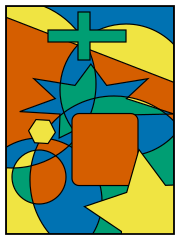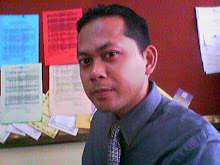History of mathematics VIII
20th century

The 20th century saw mathematics become a major profession. Every year, thousands of new Ph.D.s in mathematics are awarded, and jobs are available in both teaching and industry. In earlier centuries, there were few creative mathematicians in the world at any one time. For the most part, mathematicians were either born to wealth, like Napier, or supported by wealthy patrons, like Gauss. A few, like Fourier, derived meager livelihoods from teaching in universities. Niels Henrik Abel, unable to obtain a position, died in poverty of malnutrition and tuberculosis at the age of twenty-six.
As in most areas of study, the explosion of knowledge in the scientific age has led to specialization: there are now hundreds of specialized areas in mathematics and the latest Mathematics Subject Classification runs to 46 pages[58]. More and more mathematical journals were published and, by the end of the century, the development of the world wide web led to online publishing.
In a 1900 speech to the International Congress of Mathematicians, David Hilbert set out a list of 23 unsolved problems in mathematics. These problems, spanning many areas of mathematics, formed a central focus for much of 20th century mathematics. Today, 10 have been solved, 7 are partially solved, and 2 are still open. The remaining 4 are too loosely formulated to be stated as solved or not.
Famous historical conjectures were finally proved. In 1976, Wolfgang Haken and Kenneth Appel used a computer to prove the four color theorem. Andrew Wiles, building on the work of others, proved Fermat's Last Theorem in 1995. Paul Cohen and Kurt Gödel proved that the continuum hypothesis is independent of (could neither be proved nor disproved from) the standard axioms of set theory. In 1998 Thomas Hale proved Kepler's conjecture.
Mathematical collaborations of unprecedented size and scope took place. A famous example is the classification of finite simple groups (also called the "enormous theorem"), whose proof between 1955 and 1983 required 500-odd journal articles by about 100 authors, and filling tens of thousands of pages. A group of French mathematicians, including Jean Dieudonné and André Weil, publishing under the pseudonym "Nicolas Bourbaki," attempted to exposit all of known mathematics as a coherent rigorous whole. The resulting several dozen volumes has had a controversial influence on mathematical education.[59]
Differential geometry came into its own when Einstein used it in general relativity. Entire new areas of mathematics such as mathematical logic, topology, and John von Neumann's game theory changed the kinds of questions that could be answered by mathematical methods. All kinds of structures were abstracted using axioms and given names like metric spaces, topological spaces etc. As mathematicians do, the concept of an abstract structure was itself abstracted and led to category theory. Grothendieck and Serre recast algebraic geometry using sheaf theory. Large advances were made in the qualitative study of dynamical systems that Poincaré had began in the 1890s. Measure theory was developed in the late 19th and early 20th century. Applications of measures include the Lebesgue integral, Kolmogorov's axiomatisation of probability theory, and ergodic theory. Knot theory greatly expanded. Other new areas include functional analysis, Laurent Schwarz's distribution theory, fixed point theory, singularity theory and René Thom's catastrophe theory, model theory, and Mandelbrot's fractals.
The development and continual improvement of computers, at first mechanical analog machines and then digital electronic machines, allowed industry to deal with larger and larger amounts of data to facilitate mass production and distribution and communication, and new areas of mathematics were developed to deal with this: Alan Turing's computability theory; complexity theory; Claude Shannon's information theory; signal processing; data analysis; optimization and other areas of operations research. In the preceding centuries much mathematical focus was on calculus and continuous functions, but the rise of computing and communication networks led to an increasing importance of discrete concepts and the expansion of combinatorics including graph theory. The speed and data processing abilities of computers also enabled the handling of mathematical problems that were too time-consuming to deal with by pencil and paper calculations, leading to areas such as numerical analysis and symbolic computation.
At the same time, deep insights were made about the limitations to mathematics. In 1929 and 1930, it was proved the truth or falsity of all statements formulated about the natural numbers plus one of addition and multiplication, was decidable, i.e. could be determined by algorithm. In 1931, Kurt Gödel found that this was not the case for the natural numbers plus both addition and multiplication; this system, known as Peano arithmetic, was in fact incompletable. (Peano arithmetic is adequate for a good deal of number theory, including the notion of prime number.) A consequence of Gödel's two incompleteness theorems is that in any mathematical system that includes Peano arithmetic (including all of analysis and geometry), truth necessarily outruns proof, i.e. there are true statements that cannot be proved within the system. Hence mathematics cannot be reduced to mathematical logic, and David Hilbert's dream of making all of mathematics complete and consistent died.
One of the more colorful figures in 20th century mathematics was Srinivasa Aiyangar Ramanujan (1887–1920) who, despite being largely self-educated, conjectured or proved over 3000 theorems, including properties of highly composite numbers, the partition function and its asymptotics, and mock theta functions. He also made major investigations in the areas of gamma functions, modular forms, divergent series, hypergeometric series and prime number theory.
Paul Erdős published more papers than any other mathematician in history, working with hundreds of collaborators. Mathematicians have a game equivalent to the Kevin Bacon Game, which leads to the Erdős number of a mathematician. This describes the "collaborative distance" between a person and Paul Erdős, as measured by joint authorship of mathematical papers.


0 Comments:
Post a Comment
Subscribe to Post Comments [Atom]
<< Home